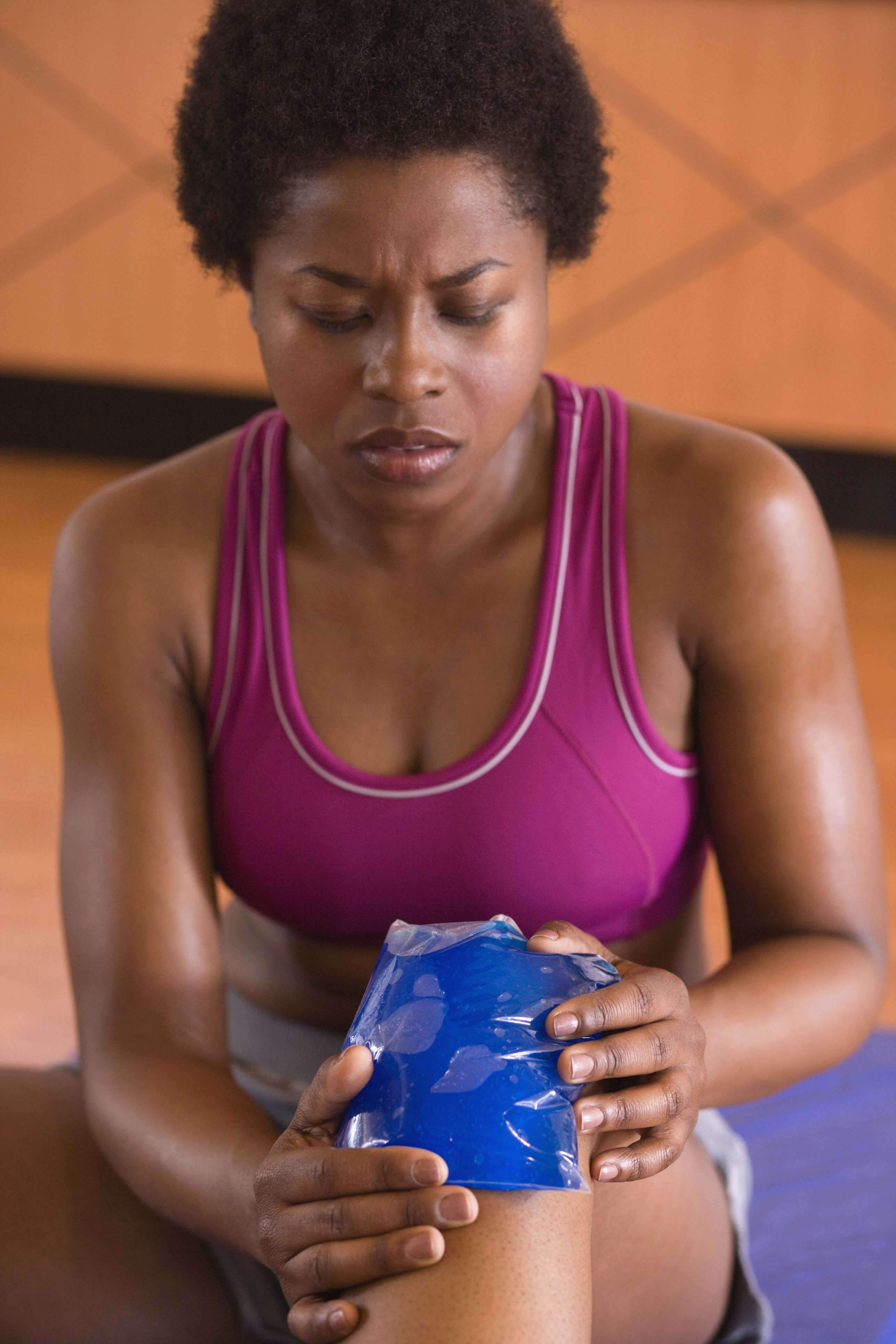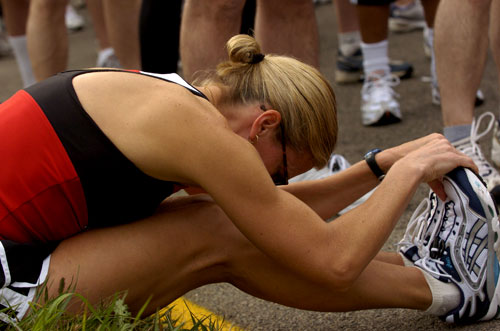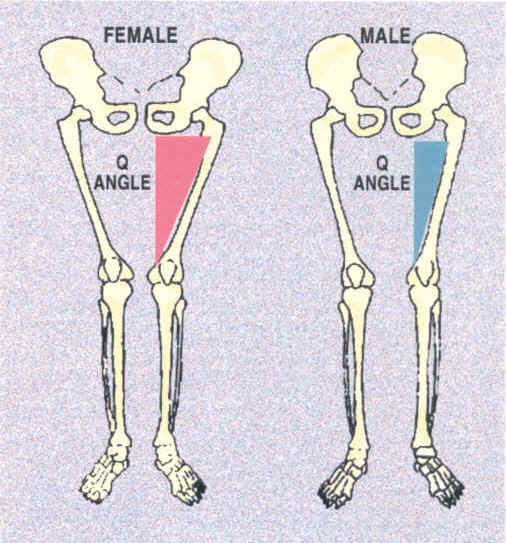 An injury can throw off your training schedule or sideline you right before your race. Nobody has time for that! (Besides, registration fees are too expensive to forfeit.) A couple a tips can help prevent and minimize the downtime caused by injuries.
An injury can throw off your training schedule or sideline you right before your race. Nobody has time for that! (Besides, registration fees are too expensive to forfeit.) A couple a tips can help prevent and minimize the downtime caused by injuries.
Disclaimer: I’m a blogger, not a doctor. If your leg has fallen apart, consult a professional.
Sit Yo Butt Down. Seriously.
Picking a training schedule that includes rest time is an excellent way to minimize strain on your muscles. Rest gives your entire body time to repair so that you can be your best at every practice run. Without rest, your body only operates at a fraction of its full capacity and you’re more prone to injury. Here’s the importance of rest days for runners and any active person for that matter:
When you overwork a major muscle, your body will try to compensate in a number of ways. Minor muscles will try to to carry more of a load than they’re use to. Your form suffers, placing unnecessary pressure on the muscles, tendons, and joints around your ankles, knees, hips, and lower back. Your body will do what it takes to get through the run that day but it can’t sustain that sort of compensation for long periods of time without breaking down.
Rather, when you give your major muscles time to repair, they don’t give out. Your minor muscles, tendons, and joints don’t overcompensate. You’re more likely to be injury free. I definitely simplified the process but you get the idea. Rest, even down to a cellular level, is important for your body’s long-term performance.
Now, rest doesn’t mean sitting on your butt eating potato chips and pizza. On rest days, simply take an easy run, or work different muscles entirely by cross training. (I’ll have a post on cross training in the future.)
 Don’t Skip Stretching, Even When You’re in a Hurry
Don’t Skip Stretching, Even When You’re in a Hurry
Congrats on taking the time to improve your health! Now you want to rush back and make dinner, feed the pets, wash the laundry, or meet up with friends, right? Regardless of how busy you are, don’t forget the importance of stretching.
I’ve encountered conflicting evidence about when and how to stretch. Some recommend getting your best stretch before the workout but after a brief warmup. Others recommend taking the longest stretch after the workout, releasing toxins and relaxing the muscles and ligaments as you cool down. As a dancer, I loved grabbing little stretch breaks during rehearsals yet my husband feels more fatigued if he stretches mid-workout. And then I’ve seen guys who run dozens of miles on a treadmill and walk away without stretching at all. They’re at the gym daily and they seem fine. So…what to do?
The most consistent advice has been to stretch twice: once after your warm up and again when the workout is finished. At the least, stretch after your warm up. Competitor.com explains why, “Targeted stretching of abnormally tight muscles and tendons has proven to be an extremely effective means of rehabilitating and preventing the recurrence of specific injuries in runners. This is because abnormal tightness in specific muscles and tendons is without question a contributing cause of particular running injuries, and stretching can increase the elasticity of muscles and tendons.” Stretching is a preventative measure that will limber you up in order to dominate your workout.
How long should you stretch? Hold each position for at least eight seconds for it to take effect. I prefer longer stretches; you can actually feel your body giving way and limbering up.
Injuries Are Still Gonna Happen
Minor injuries are inevitable for first time runners, though. We’ve got to learn how to run: weight placement, form, proper breathing, learning our limits. In the learning process, we’re bound to make mistakes and probably hurt ourselves even when we’re resting and stretching properly.
I’ve got 28 years of girlish walking to unlearn. I walk heel-heavy with a swing in my hips and my arms– Tyra Banks fierce runway style. I blame years of watching ANTM. While this might work well in a pair of heels (it helped me snag my husband, anyway) this is not conducive to running. After my first run beyond three miles I noticed tightness behind my left knee.
I began by balancing out my stride, aiming for a mid-sole strike rather than pounding my heels on the pavement. I felt lighter and less exhausted on my next run. Yay! But that didn’t eradicate the soreness behind my knee so I went to a specialist at Foot Solutions for help.
After a quick evaluation, my specialist believed that I had the proper inserts for arch support and there were no major problems in my weight placement (the wear on my shoes was even). During my test run, though, he noticed two things:
-
The pronation on my left foot is a bit more exaggerated than on my right. He added a bit of material to my arch support to help.
-
My legs aren’t aligned as they’re “supposed” to be. They function wonderfully and I’m not complaining but as a runner the slight misalignment of my left knee could be the cause of my soreness; he says my Q Angle is high, which places a greater burden on other parts of my legs and hips. There isn’t much I can do about this other than ice my knee after long runs and improve every other facet of my form to minimize additional stress. Building muscle will help to support myself better and that will help in the long term, too.
When you’re injured, remember RICE: Rest, Ice, Compression and Elevation. If done in the formative stages of an injury, RICE can prevent the injury from getting worse and morphing into something worse (and more costly to fix). Guess what? There’s an entire post on RICE coming soon. Woop woop!
One thought on “Prevent Injuries While Getting Your Sexy On”